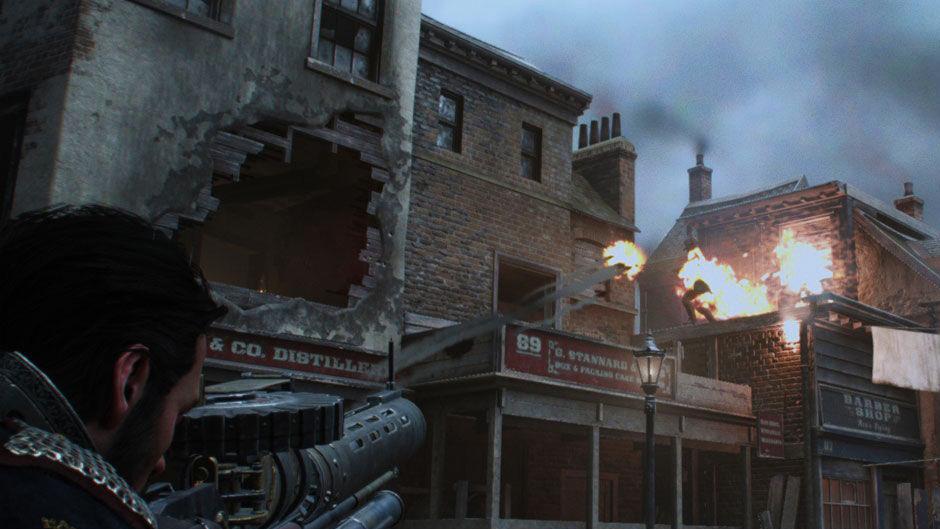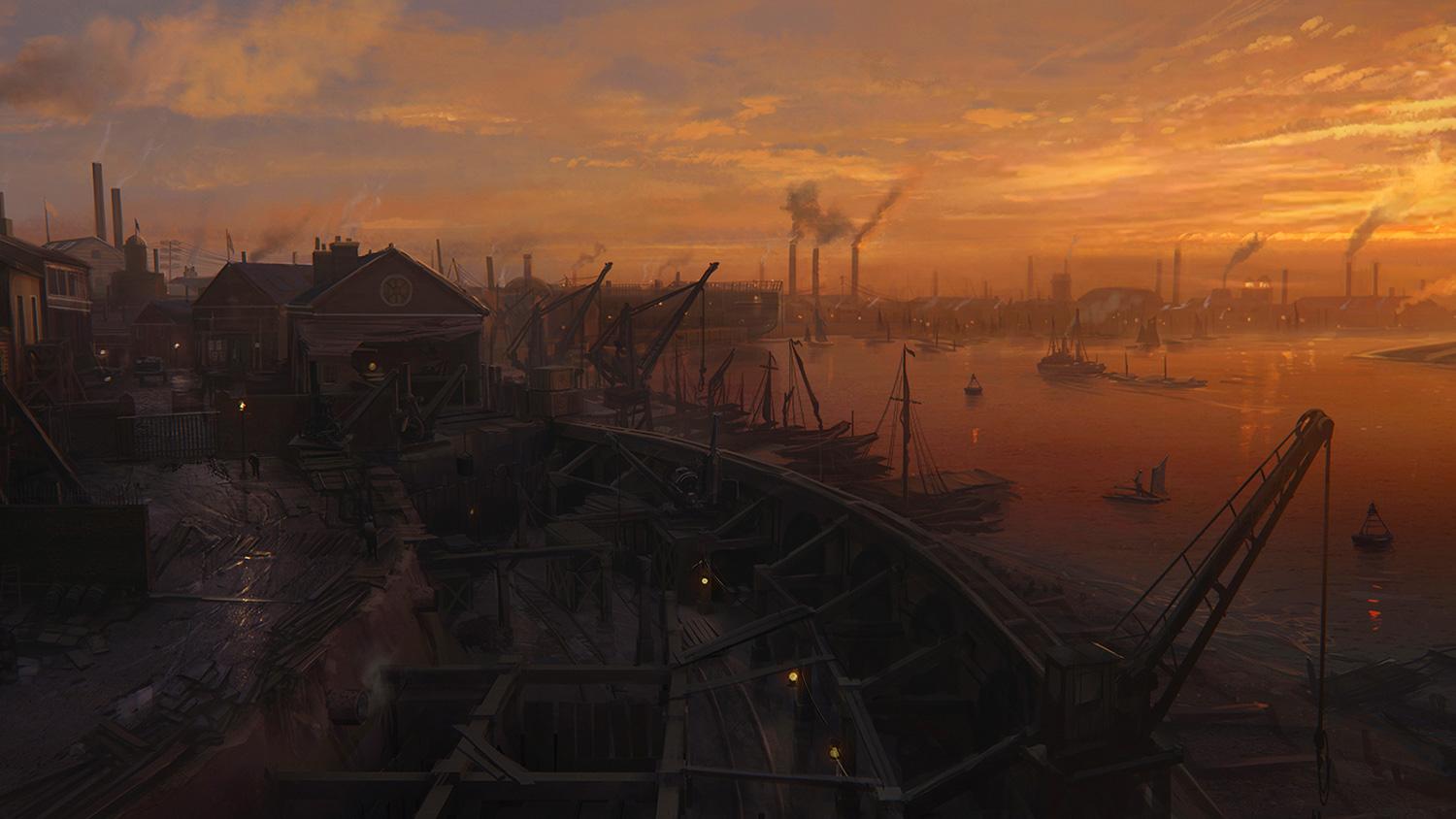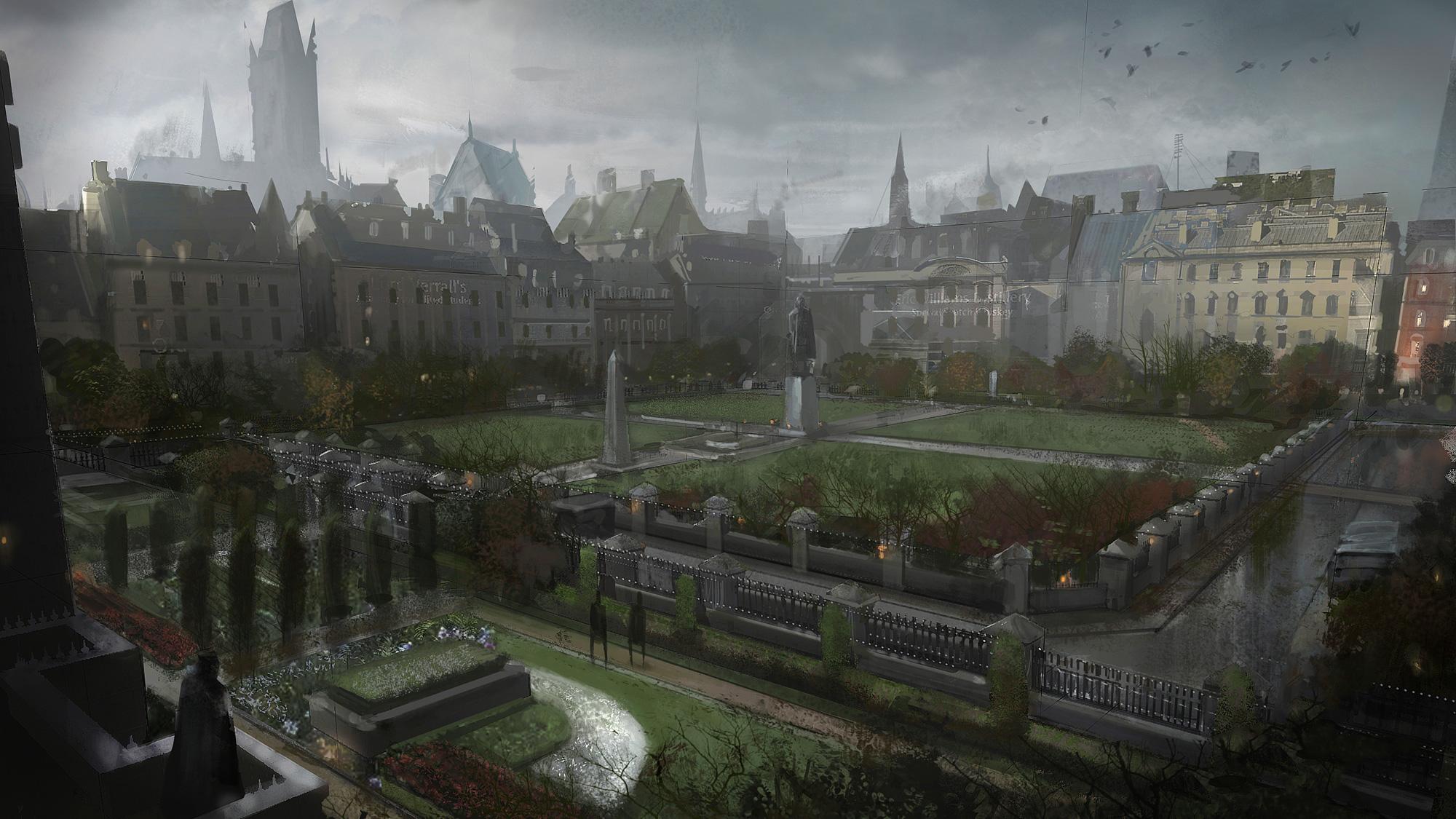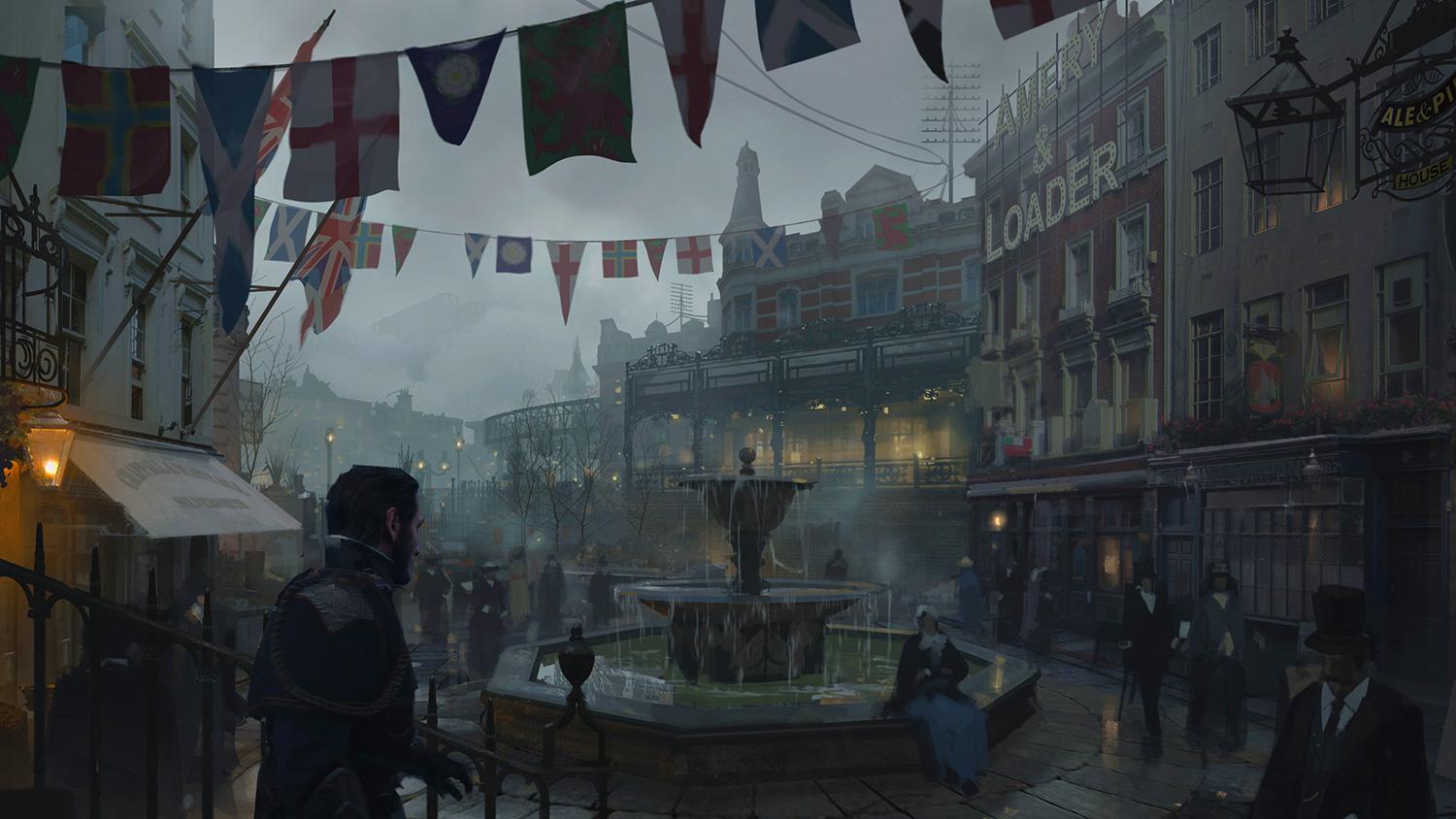The Victorian-era London depicted in The Order: 1886 is familiar, but it takes just a glance to confirm that this is not our London, not the 19th century city that has been so heavily romanticized over the decades. Airships litter the smokey skyline, while in the distance machine gun fire can be heard. Trash and rubble line the streets, and a towering spire – bigger than anything in the real city at the time – towers over the cityscape. It is London in in the year 1886, but with a thick coat of fantasy steampunk layered on top. It’s a world of monsters and secret societies, a place where a small group adventurers known as The Order have been at the forefront of a brutal war for centuries.
Developer Ready at Dawn has stayed somewhat under the radar in recent years, but with The Order: 1886 that has already begun to change. The California-based game studio founded in 2003 is best known for its work on PlayStation Portable releases in the God of War franchise, but it has quietly been working on this PlayStation 4 exclusive since 2010.
Related: The Order: 1886 review
We recently had the chance to see the game in action, in an eyes-on look led by developers. What we saw was an early build, taken directly from the development team and rushed to presentation without time to polish it first. With that said, if the early build we saw is any indication of the finished product, PS4 fans should prepare to taunt their Xbox One owning friends mercilessly when this PS4 exclusive is released in Q3 2014.
Story
Londernate. The world that The Order: 1886 takes place in is an alternate to our own. More than a thousand years before the start of the game’s events, half-human/half-beast hybrids began to appear. Humanity did not take kindly to this, and a war began between the two species. While humanity outnumbers the halfbreeds, the animalistic nature of the new species gives the smaller group physical advantages, leveling the playing field.
After centuries of fighting, King Arthur formed the Knights of the Round Table to battle the halfbreeds. The Knights, through an as-yet-unrevealed twist, discover a mystical liquid called Black Water that grants those Knights longer lives and faster healing. The Knights chose successors to pass their secrets on to, and this line of warriors came to call themselves The Order.
Victorian warfare. The game picks up in 1886 with the war still ongoing. Martial law has stifled the lower class, inadvertently creating a new threat that The Order must also contend with in addition to the halfbreeds. While the ancient war is The Order’s chief concern, the rebellion can’t be ignored either, as we saw in the demo’s visit to Whitechapel, where both rebels and halfbreeds dwell in their “Underworld.” The Order is called to this place to investigate after a crate of high-tech weaponry (for the era) goes missing.
Knights of the Round. The game focuses on four members of the secret society, all of whom use familiar Arthurian codenames like “Galahad” and “Percival”. There’s a seasoned warrior named Grayson, who is the third person to take the name Galahad; Grayson’s mentor Sebastian Mallory, a descendant of Arthurian novelist Thomas Mallory, who is the second to bear the name Percival; Isabeau D’Argyll, Grayson’s protege and would-be love interest if not for their duty, who operates under the name Lady Igraine; and Marquis de Lafayette, the French military officer renowned for his assistance during the American Revolution, who remains an apprentice at the start of the game, and has yet to earn an official name. It’s Galahad and Lafayette who venture to Whitechapel in search of the missing weapons.
Gameplay
The old guard. The Order: 1886 is a third-person shooter in the vein of many others. Using cover is an important feature, and the level we were shown was a straightforward gauntlet of cover-based combat. As a member of the Order, you have access to weaponry that combines technology with a hint of the occult. The weapons tech is far ahead of its time, but it don’t necessarily feel out of place given the alternate reality setting.
Without actually having had the chance to take the controls ourselves, it’s tough to say exactly how the game moves and feels. The demo was meant to give a sense of how the game looks and what it is all about.

Cinema control. The Order: 1886 mixes gameplay and cinematics, and frequently merges the two together using quick time events. In the example shown, Galahad came face-to-face with a member of the rebellion. The two struggle and Galahad reaches for the knife, which requires a timed button press. Success means Galahad emerges bloody and victorious, though failure doesn’t result in a Game Over. The fight simply continues in a different direction, leading to another QTE opportunity. The touchpad is also integrated into the gameplay; in one example, it was used to send Morse Code to a distant airship. This could have been accomplished by using a button, but the touchpad creates new possibilities that we’ll hopefully see more of as the game develops.
Presentation
London Fog. Ready at Dawn is quick to point out that while the game may not be a completely accurate look at 19th century London, it does stick with some of our known realities of the time. For example, Whitechapel was historically one of the poorest districts in London, and the developers made an effort not to cover that up. There have been many romanticized portrayals of the city at that time, but Victorian-era London was also a filthy and overcrowded place. The game does not shy away from that, and the city teems with small details. Individually modeled buildings look different from one another with unique signs in the windows or names painted on the walls. Trash lines the streets, and realistic-looking smoke mixes with fog to create a grey world. Chimneys are covered in soot, and bricks are cracked and chipped. It may not always be pretty, but it is compelling and immersive.
Next-gen realities. This level of detail makes for an amazing-looking game, filled out by expressive faces, complex textures, and impressive plays of light and shadow. The city of London feels like a city should – it is beautiful and gritty, clean and messy. It is a living, breathing contrast, just as real cities are. The Order: 1886 uses the power of the PS4 to create a real sense of atmosphere, and it’s alternate reality city of London is just as much a character as anyone from The Order.
Takeaway
We walked away from The Order: 1886 with as good an impression as is possible without actually having any hands-on time. The setting takes a familiar time period and recreates it with fresh eyes. The story also builds on popular mythology in a clever way, by interjecting the Knights of the Round Table and other historical elements with its fantasy war between humans and halfbreeds. With the PS4 still bulking up its library, The Order: 1886 is a title that new console owners should keep a close eye on.








